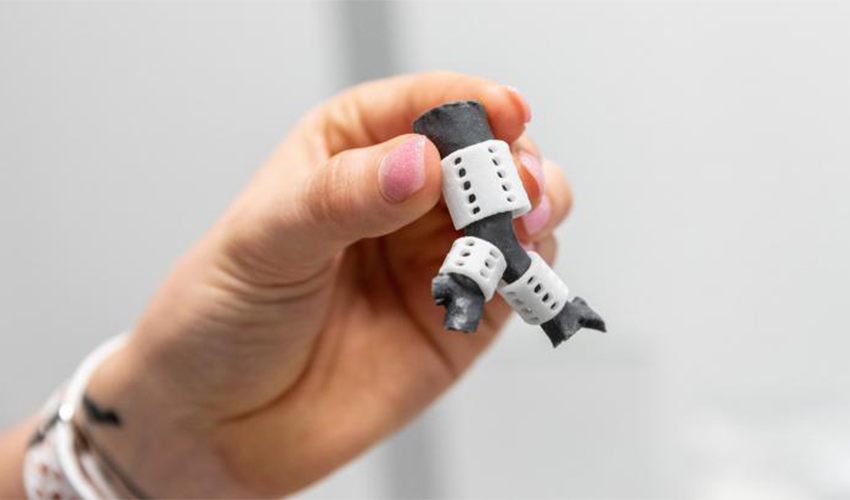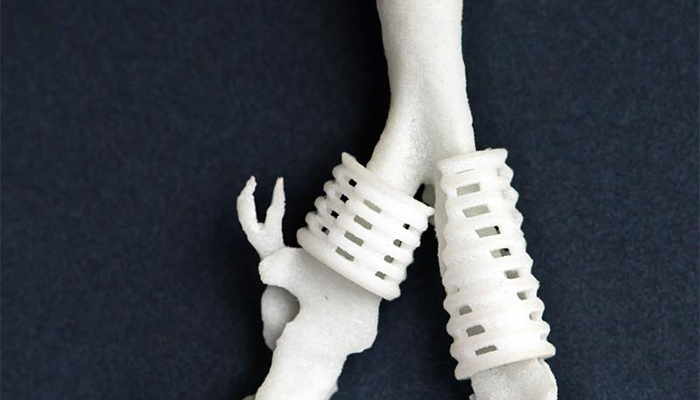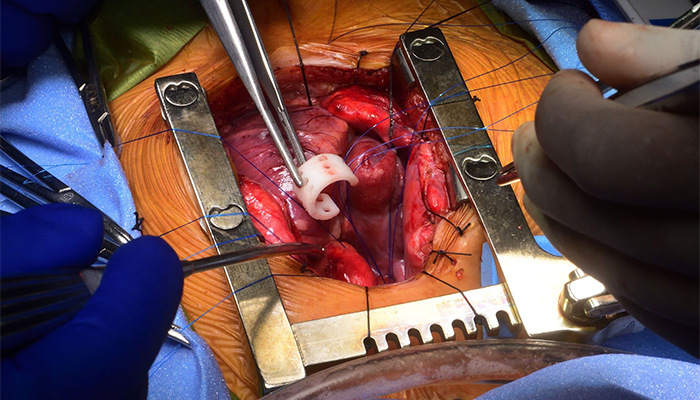3D printed tracheal splinter used in complex surgery

Medical treatments have gotten a long way over recent years. One of the technologies adding to this progress has been in the form of 3D printing. With 3D technology in the medical industry, area such as bio-printing is getting us closer to cutting organ patient waiting lists, customising medical devices and much more. One new method is with biomedical engineers of Georgia Tech have assisted the Children’s Healthcare of Atlanta to treat children with a new procedure containing a 3D printed tracheal splinter.
First of it’s kind in Georgia
The hospital has been able to perform the first-of-its-kind procedure in Georgia to place 3D printed tracheal splinters in a paediatric patient. The team had three 3D printed splints customised to help stabilising the breathing of the 7 month-old patient, Amir. He has battled life-threatening airways obstruction a big part of his short life.

Amir was suffering from congenital heart disease and trachea-bronchomalacia. In simple terms this condition causes a severe life-threatening airway obstruction. Because of this the young patient was checked in at the hospital for a duration of 6 months. During the inpatient period at the Paediatric Intensive Care Unit at Children’s, he vent through frequent episodes of airway collapse that was not possible to correct with regular surgery methods. With this in mind the clinical team proposed to surgically insert an experimental 3D printed tracheal splint, to open up his airways and further expand the trachea and bronchus.
The splint is a novel device still in development and designed by Scott Hollister, who hold the Patsy and Alan Dorris Endowed Chair in Paediatric Technology. It is a joint venture supported by Georgia Tech, where Hollister is the director of their center for 3D Medical Fabrication, and the Children’s Healthcare of Atlanta. Hollister stated “The possibility of using 3D printing technology to save the life of a child is our motivation in the lab every day.” He continues “We’re determined to develop innovative solutions that meet the needs of Georgia’s most complex paediatric patients”
Complex surgery with 3D printed tracheal splinter
The procedure in steps begins with taking a CT scan of the patient’s airway. From there Hollister, whom is also the director of the Center for 3D Medical Fabrication at Georgia Tech, along with his team created multiple versions of the splint in various sizes. This to ensure that the perfect fit would be available for the surgical team to place around the patient’s airways during surgery. The actual production of the splint is done through a printer spreading polycaprolactone (PLC) powder into the developing area, with the laser tracing the pattern to fuse the layers closely together.
The complex surgery took just about 10 hours. Ending up with the cross-functional team of surgeons successfully placing the three 3D printed tracheal splinter around the patient’s trachea the 17th of august this year. As the tracheal procedure was finished, the child was placed on a heart-lung-machine for surgical repair of his cardiac defect. Over a time period of 3-4 years the splint’s material will be absorbed into the body of the patient, to allow for expanding the trachea and bronchus.

Implanting 3D-printed tracheal splints. Photo via Children’s Healthcare of Atlanta.
The procedure and 3D printed splint is still under development. As such, the new device, is still not fully determined to be safe and effective. It is therefor not available for clinical use. The team had to apply for emergency clearance from the FDA to move forward with the procedure under expanded access guidelines. The procedure in Georgia is the 15th time any patient have received such treatment with the 3D printed tracheal splinter. The first time a 3D printed trachea was implanted was back in 2015.
Learn more about how Amir’s procedure with the 3D printed tracheal splinter:
What are your thought on the 3D printed tracheal splinter? Let us know in a comment below or on our Facebook and Twitter pages! And remember to sign up for our free weekly Newsletter, to get all the latest news in 3D printing send straight to your inbox!





